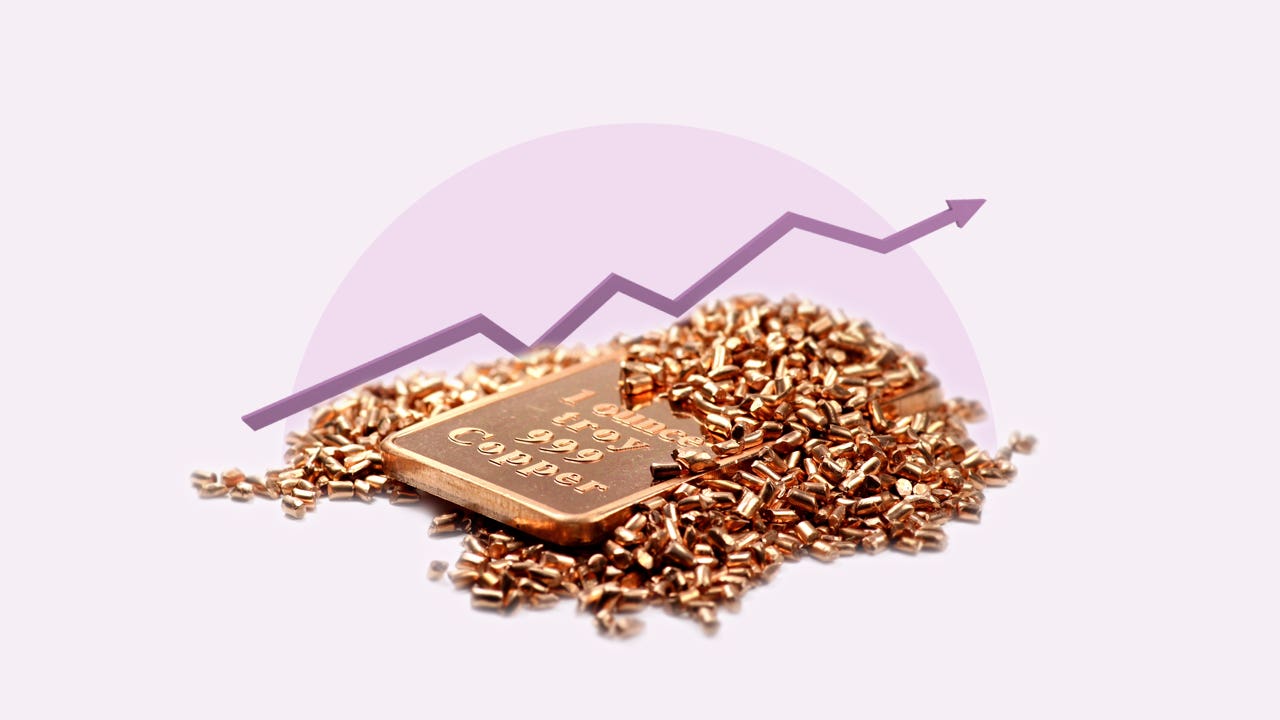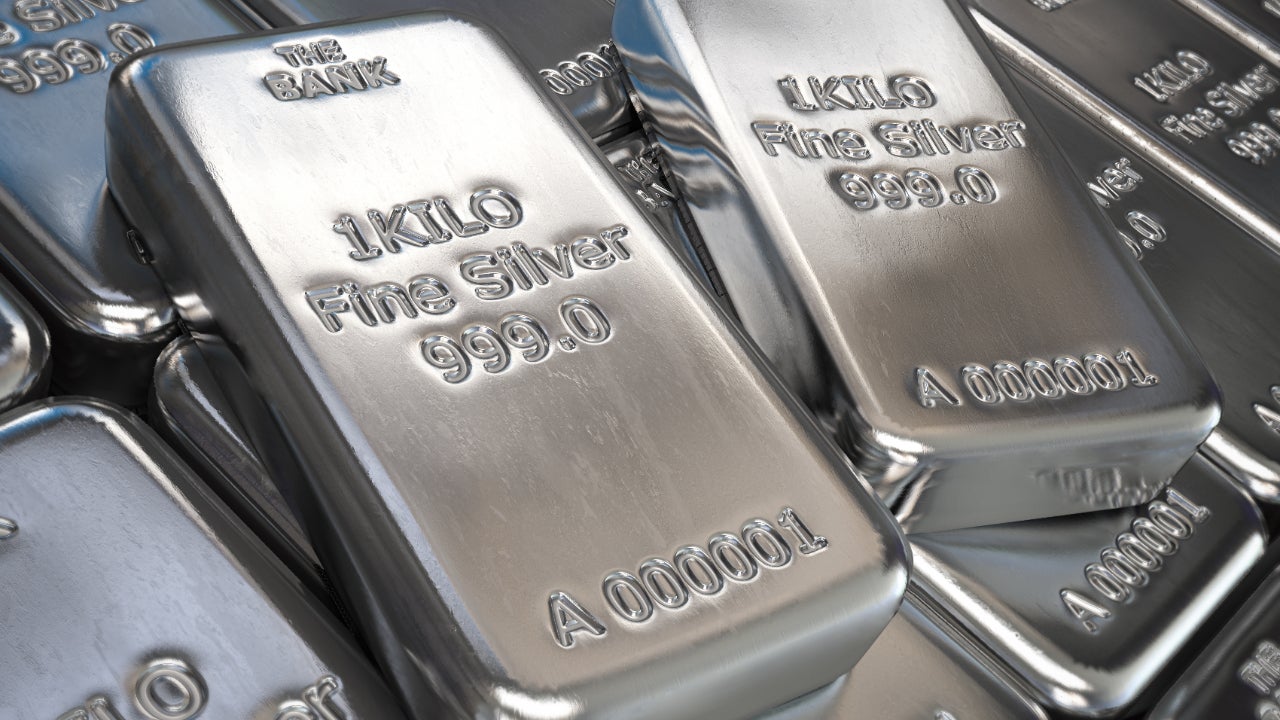How to invest in copper: 5 ways to buy and sell it

The metal copper has gotten a lot of press recently, as prices have been soaring on increasing demand. Copper has a lot of industrial uses, including in electric vehicles, and relatively tight supply means that any notable jump in demand could send the metal’s price skyrocketing.
Although copper may not be quite the traditional safe haven investment that gold and silver are, it may still have a bright future. As a commodity during inflationary times, copper may end up being a store of value, even though it doesn’t produce cash flow. So, it may be a way to hedge investments in stocks and bonds, for example, and diversify your portfolio.
Here are five different ways to invest in copper and key risks to watch.
5 ways to invest in copper
1. Copper bullion
You can purchase copper bullion just as you would gold bullion, buying it as coins or even bars. You’ll have the enjoyment of holding it and looking at it, but this form of copper investment has major drawbacks, too. Perhaps the key one is the need to safeguard your physical copper.
To turn a profit, you’ll need to see the price of copper rise, of course. But that’s the only means of making money here, unlike various other types of investing in copper below, such as mining companies, where they can grow production and the price can rise, offering a double whammy.
You can purchase physical bullion through an online dealer such as APMEX or JM Bullion, or local dealers or pawn shops may have some for sale. Local collectors may also have some.
It’s important that copper traders note the spot price – the current price to transact now – so that they can make a fair deal. If you’re looking to invest in the metal itself, stick to bars rather than coins or collectibles that may charge you for the collectible value rather than the copper content alone. (These may not be made of copper, but here are 9 of the world’s most valuable coins.)
Risks: The big risk of owning bullion is that you have to keep it safe. If you have a big enough stake, then you’ll want to protect it. Another annoyance of copper is that at a price of about $4.30 per pound, you’ll have to lug around a lot of it to store much value.
But investing in bullion poses another major downside. You’ll lose a lot of value on the purchase and sale of the metal. Brokers will buy at lower than the spot price, so that they have a price and will sell at higher than the spot price on the other end. If you need the money quickly, you could take a significant hit on your holding, receiving much less than they’re worth on the open market.
It’s the same reason that buying gold at Costco can be a terrible investment.
2. Copper miner stocks
If you don’t want to own copper directly, you can instead own the companies that mine it out of the ground. For investors, this may be among the best ways to participate in the metal’s upside.
Investors in a mining company can lead to profit in two ways instead of just one, as with bullion. If copper prices rise, the output of the miner rises. If the miner can boost production over time, then they can turbocharge their profit potential.
Risks: If you’re investing in individual stocks, especially mining stocks, it’s vital that you understand the business well, and that may not be easy to do. Many miners are risky, so you can’t just pick a miner and hope for the best. You’ll want to look for a proven player, and it’s probably better to stay away from so-called junior miners without a strong, productive mine.
3. Copper miner ETFs
If you don’t want to get into the nuts and bolts of individual mining stocks – and few investors do – then you can opt for an exchange-traded fund (ETF) that owns miners. Of course, many miners operate across different sectors – gold, silver and the like – so you’ll get a hodgepodge of mining companies rather than just pure copper plays, but it could be worth the diversification.
And since ETFs hold dozens of different mining stocks, your portfolio will likely be less risky than owning just a few individual stocks. You’ll be hurt less by any single stock’s underperformance.
The larger funds here include Global X Copper Miners ETF (COPX) with an expense ratio of 0.65 percent, Sprott Junior Copper Miners ETF (COPJ) with an expense ratio of 0.78 percent and iShares Copper and Metals Mining ETF (ICOP) with an expense ratio of 0.47 percent.
These funds can be bought at any of the best brokers for ETFs.
Risks: A diversified fund can help protect you against a single company doing poorly due to specific things at that company, but it won’t help you when it comes to issues that affect the whole industry. So a downturn in copper prices or slower industrial activity may hit all copper miners, hurting performance despite diversification into multiple companies.
In addition, pay attention to the types of companies included in the fund. Some may have more established miners while others have riskier junior miners.
4. Copper futures
Copper futures can be a good way to play the rise in copper prices, and you can even play it the other way, too, if prices fall. The big advantage of using futures to trade copper is that you can use significant leverage to take a position, owning many more times copper than you could otherwise. If the price moves the way you like, you could turn a small sum into a large one fast.
Futures trading is for sophisticated investors, and you’ll need a broker that allows futures trading, and not all of the major brokers provide this service. Still, despite some drawbacks, futures are a way to make (or lose) money quickly on the moves of an already volatile commodity.
Risks: The impact of leverage in futures works both ways. If the price of copper moves against you, you’ll need to deposit money with the broker – called margin – to keep the position. Otherwise, the broker will close the position and you’ll suffer a loss.
5. Copper futures ETFs
Some ETFs do the work of trading futures contracts for you, making it easier to own and speculate on copper without the need for a futures account. You can trade the fund in a traditional broker account, with all the simplicity that involves.
One ETF here is the United States Copper Index Fund (CPER), which has an expense ratio of 1.04 percent. The fund is designed to reflect the performance of copper futures on the COMEX exchange and owns primarily copper futures contracts, though it may hold other financial assets.
Risks: A copper futures ETF may be a better pick to capture the short-term moves in the metal’s price rather than a long-term buy-and-hold. The fund charges a substantial expense ratio, and the nature of rolling future contracts can cause the erosion of asset value over time.
Why investors like copper
Investors may like copper in their portfolio for a variety of reasons, including the following:
- Price appreciation due to underlying demand: Copper has important industrial applications, especially in key growth areas such as electrical vehicles and electrical infrastructure. These applications ensure that demand continues to put upward pressure on the metal’s price, keeping it rising.
- Inflation hedge: Commodities such as copper can act as inflation hedges, allowing investors to capture price increases that may otherwise be passed along to consumers.
- Diversification: Investing in commodities such as copper can help smooth out the volatility in a portfolio and reduce the overall risk in an investor’s holdings.
Of course, investors may steer clear of copper, too, for some reasons.
- Volatility: Like a typical commodity, copper can be highly volatile, moving up and down a lot. This volatility can feel like a rollercoaster if you’re not prepared for it – and even if you are.
- Unattractive bullion: Investors may find investing in copper bullion to be uninteresting, especially given its low price-to-weight ratio. In addition, bullion does not generate cash flow and investors have fewer “ways to win” with bullion than other copper investments.
Investors looking at commodities should review the profit potential and see if it makes sense for them.
Bottom line
Investing in copper may or may not make sense for your portfolio, but look at the fundamentals driving the demand to see what the long-term outlook could be. Because of the downsides of investing in the metal itself, it can be a lot smarter to invest in cash-flowing businesses that produce the metal, letting you win multiple ways and trade at the fair market value at any time.
Editorial Disclaimer: All investors are advised to conduct their own independent research into investment strategies before making an investment decision. In addition, investors are advised that past investment product performance is no guarantee of future price appreciation.
You may also like

How to give cryptocurrency as a gift

8 ways to invest like a millionaire




